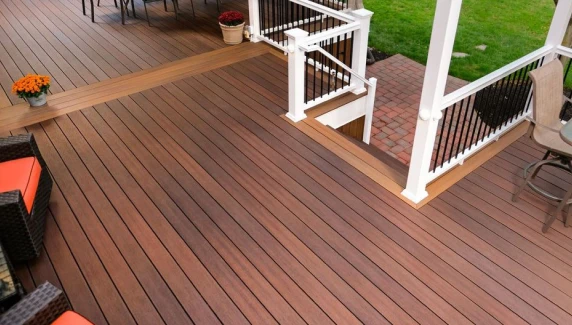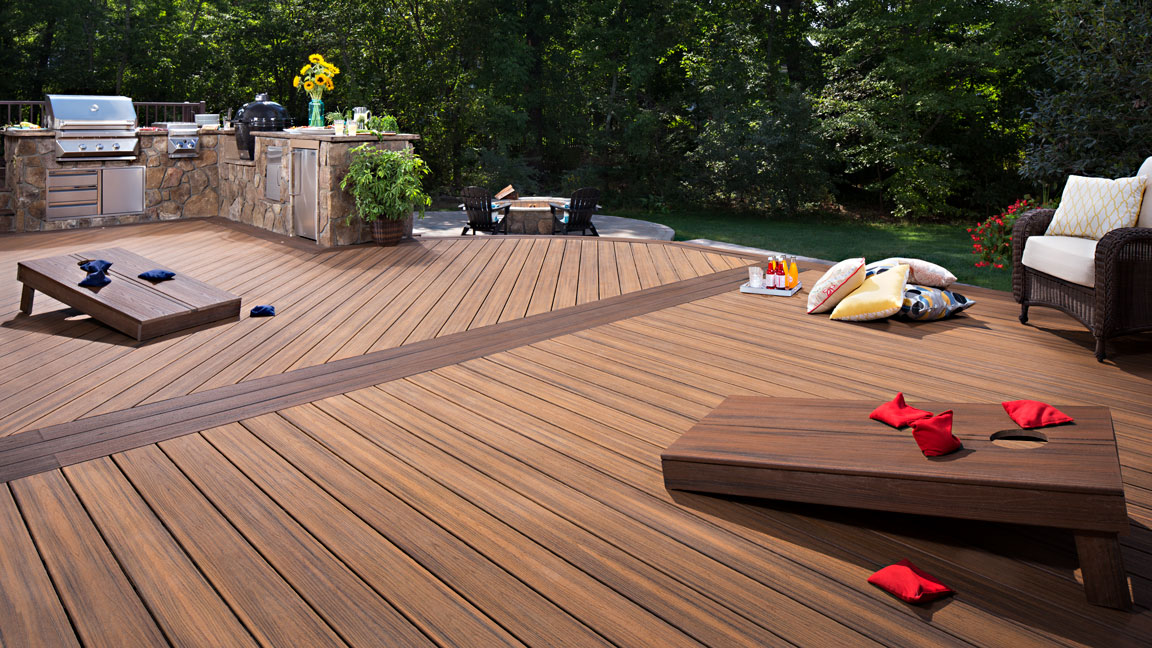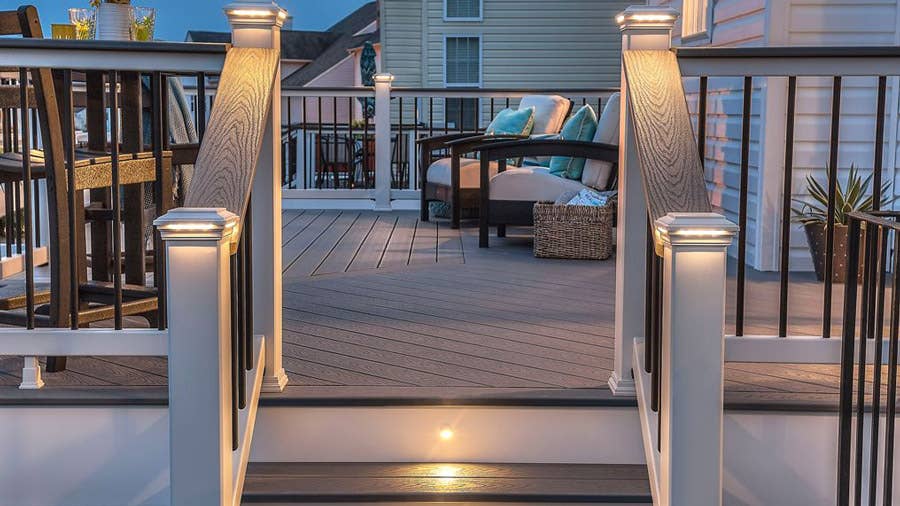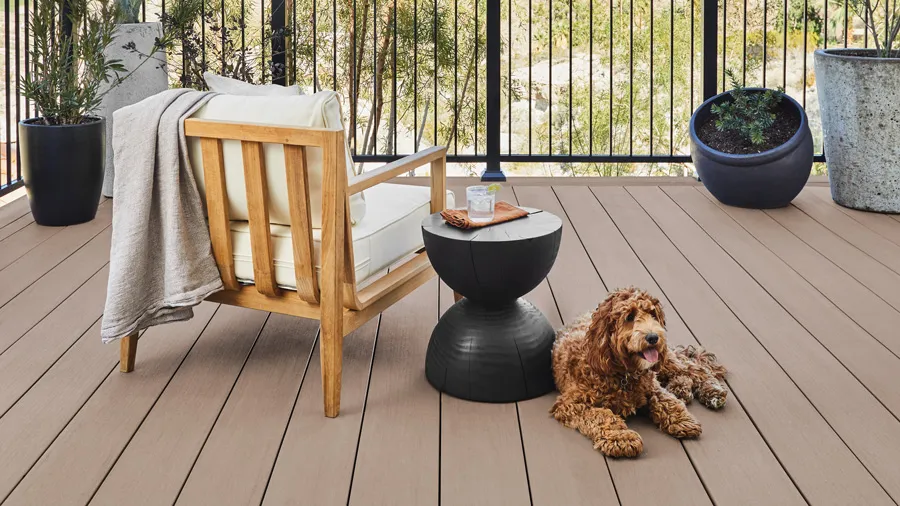
Free Shipping On Most Orders | Financing Available With
![]()
My Cart
The Ultimate Buying Guide to the Best Composite Decking
Do you want the best for your deck? Composite decking can deliver it. With our complete guide to the best composite decking, you can learn everything you need to know to get the perfect low-maintenance deck boards for your space. Join us as we explore the different types of composite decking boards.
In This Guide:
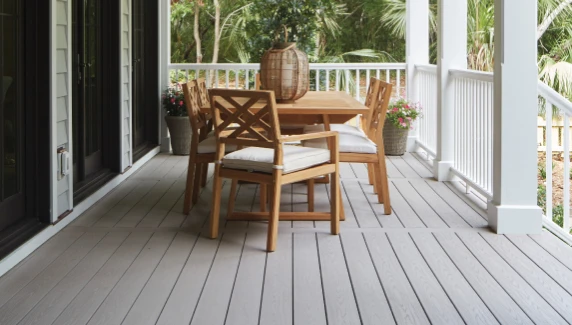
Composite Decking Overview
Before we discuss the best composite decking, let's take a closer look at this material, which offers the authentic look and feel of wood with enhanced durability. Composite decking ensures your deck remains pristine without the hassle of painting or sealing, giving you more time to enjoy your outdoor lifestyle.
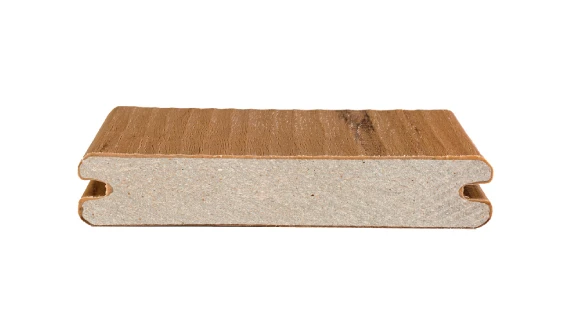
What is Composite Decking?
Composite decking is made from natural wood fibers mixed with recycled plastics. This combination creates deck boards that look and feel like natural wood, but are far more durable and require less maintenance.
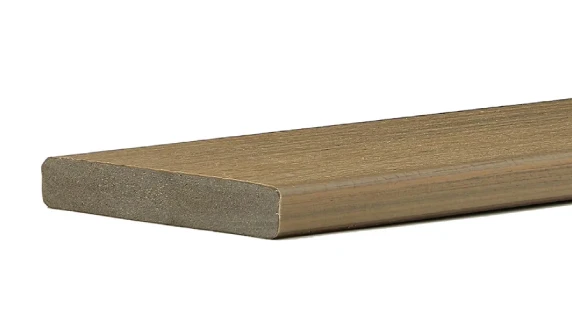
Benefits of Composite Decking
Thanks to its innovative composition, the best composite decking offers numerous advantages, including:
- Never requires painting, staining, or sealing
- Doesn't crack, split, rot, or splinter
- Doesn't weather or fade like wood - the look you install is the look you get long-term
- Long-lasting and typically protected by lengthy manufacturer warranties
- Eco-friendly: made from recycled materials
Composite Vs Wood Decking: Pros & Cons
When you compare the best composite decking to wood, you'll find that composite provides many advantages over its natural counterpart.
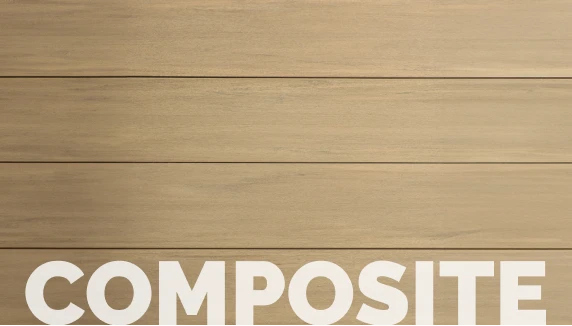
Composite Decking
Pros:
- More durable and longer lifespan
- Low-maintenance: never needs painting, staining, or sealing - just a simple cleaning a few times a year
- Termite-proof
- Doesn't fade, stain, crack, split or splinter
- Saves money in maintenance/repair costs across the life of your deck
Cons:
- Higher initial cost
- Uncapped composites can scratch easily
- Looks can range from high-end to artificial-looking, so it's important to pick the right brands and lines
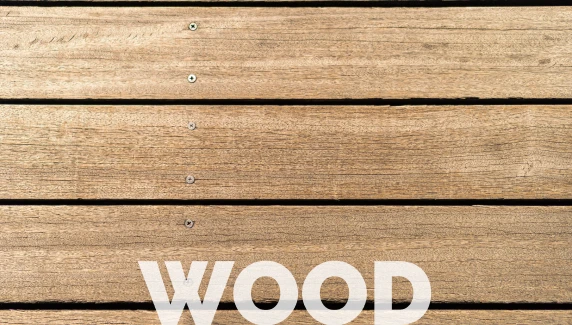
Wood Decking
Pros:
- Cheaper initial cost
- Natural look and feel
- Classic, traditional deck look
Cons:
- Shorter lifespan: will need replacement in 10-20 years or less
- Requires staining and sealing every few years
- Regular exposure to rain and moisture will cause rotting, warping, cracking and splintering over time
- Looks fade much faster without diligent staining, painting, or sealing
Types of Composite Decking: Board Profiles
If you look at the best composite decking, you'll notice various profiles. Each of the different types of composite decking board profiles offers its own advantages.
Grooved Edge vs Square Edge Composite Decking
First, let's explore the difference between grooved edges and square edges.
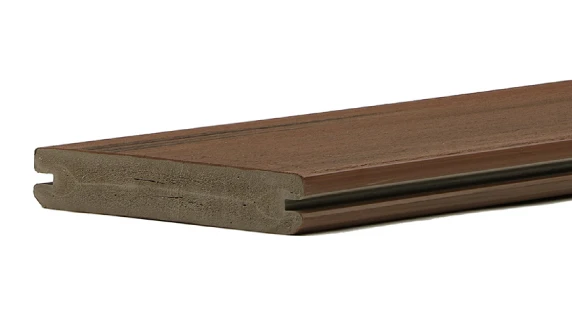
Grooved Edge Boards
Grooved edge boards are designed for use with hidden deck fasteners for a smooth, unblemished deck surface.
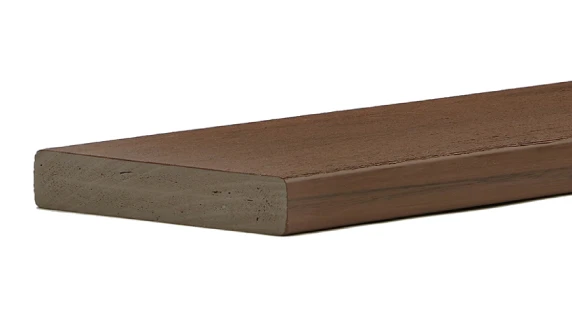
Square Edge Boards
Traditional square-edge boards are designed to use face-fastening screws. They're also best for places where the edge of the deck board will be visible, like the outsides of your deck, stair treads, or drink rails.
Solid Bottom vs Scalloped Bottom Composite Decking
It's also useful to compare composite decking boards that have solid bottoms against those that have scalloped bottoms.
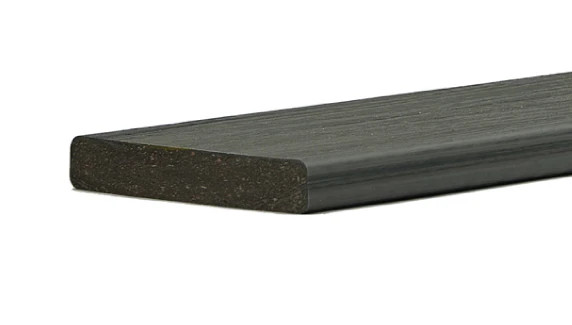
Solid Bottoms
Most composite deck boards have solid bottoms - a flat surface underneath your deck board and a consistent thickness across the board.
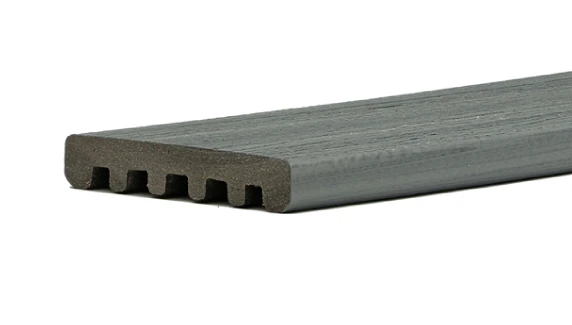
Scalloped Bottoms
One way to save money on a composite deck is to use a board with scalloped bottoms. They use less composite material to keep costs down, and are lighter and easier to transport.
However, you can't use scalloped boards as drink rails on top of a railing, and they typically can't use plug systems to hide your fasteners like solid boards can.
Capped vs Uncapped Composite Decking
The best composite decking has evolved over the years. One of the most obvious areas of improvement is the switch to capped composite deck boards.

Early generations of composite decking were often uncapped and easy to scratch. So decking manufacturers developed tough, protective shells to make the walking surface of each board more durable.

The 3-sided capping makes boards more resistant to scratching and protects the boards better from the outdoor elements. We highly recommend capped composite deck boards, and every board you'll find in DecksDirect's selection is complete with a high-performance cap.

4-sided capping: Some decking lines go the extra mile and cap each board on all four sides. If you want the best weather resistance possible, check out TimberTech or Fiberon deck boards, which are capped on all four sides.
Best Composite Decking Brands
A few brand names come up over and over again when people talk about the best composite decking. Our top contenders include:
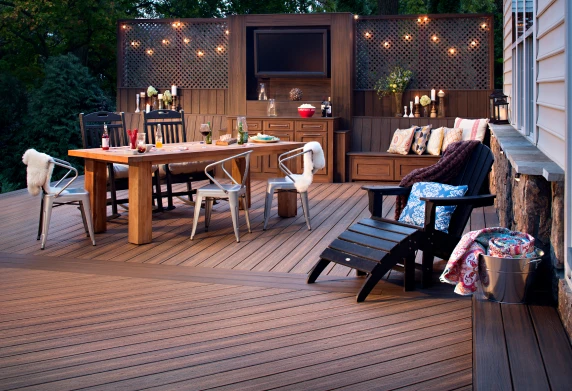
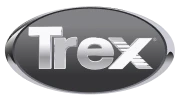
In discussions of the best composite decking, Trex is probably the best-known brand, having launched the category to relevance in the 1990s and 2000s. It offers plenty of benefits, including:
- Proven, traditional styles
- Accessible anywhere: fully in-stock with nationwide shipping from DecksDirect
- Lots of same-brand railing, lighting, and underdecking options
What's the difference between Trex Transcend and Trex Select?
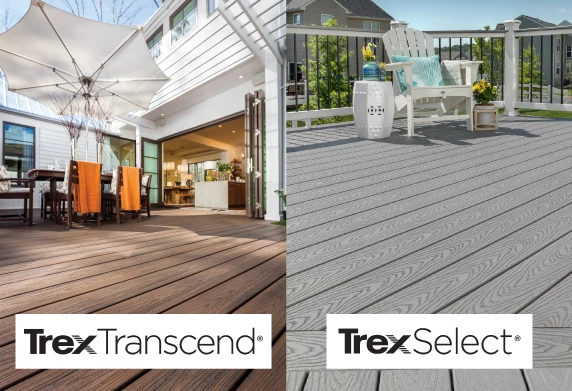
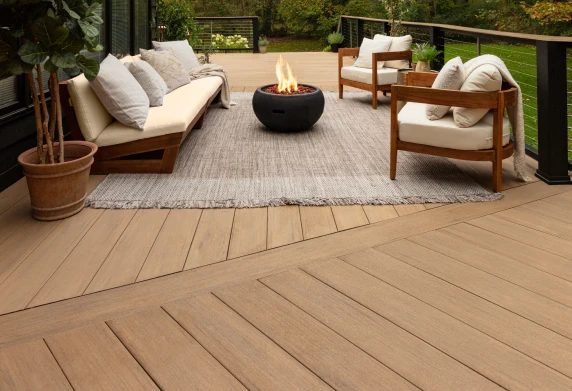

TimberTech is another brand that gets attention when people talk about the best composite decking. It offers advantages like:
- Detailed, on-trend looks
- A favorite of contractors and decking professionals
- Huge range of product offerings
- Multi-width deck board offerings
- Premium PVC offerings
Which TimberTech decking line is best for me?
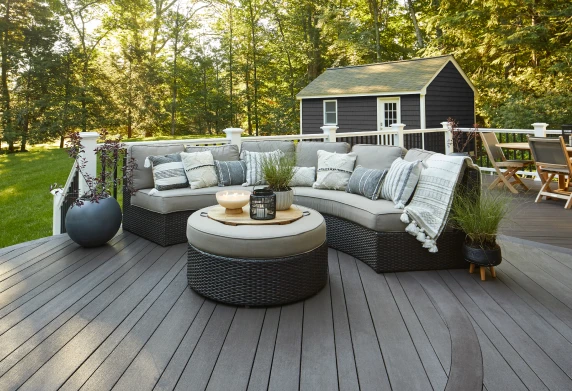
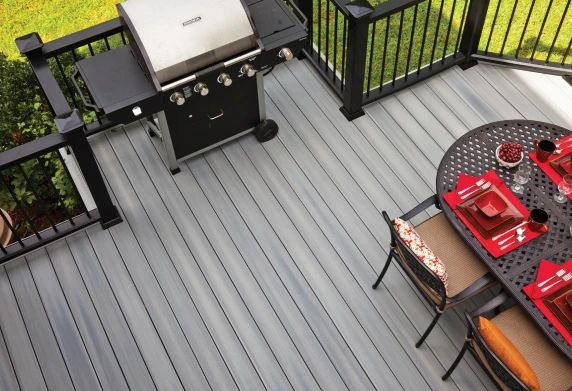

No discussion of the best composite decking would be complete without mentioning Fiberon. Its benefits include:
- High-performance boards at a high-value price point
- Eco-friendly, sustainable, efficient production processes
- Expert-inspired and expert-approved products
Which Fiberon deck boards are best for me?


Best Composite Decking Brands
We review the pros and cons of the top composite decking brands on the market to help you find deck boards you can count on.
How to Choose the Best Composite Decking for Your Needs
The low-maintenance decking industry has exploded with deck board options, each with their own unique looks and functions. How do you find the perfect boards for your ideal deck? Check out our guides to selecting the best composite decking materials and decking lines based on your deck goals.
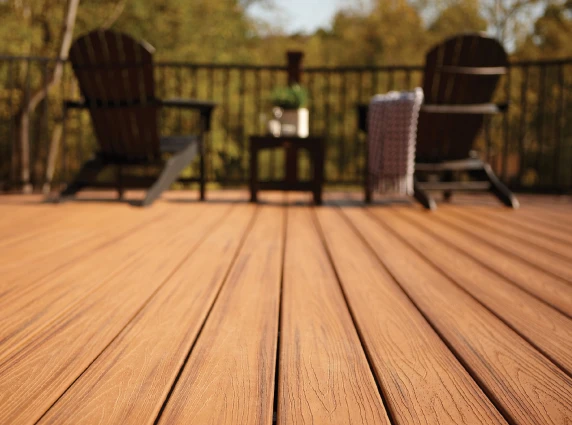
How to Choose the Best Decking Material for Your Deck
What are the most water-resistant deck boards for a poolside or beachside deck?
How do you pick deck boards that stay the coolest on hot, sunny days?
What decking material offers the most style and look options?
Get the answers to these common questions and more in our Decking Materials Guide, profiling composite decking, PVC decking, and futuristic mineral-based composite decking.
Read the Guide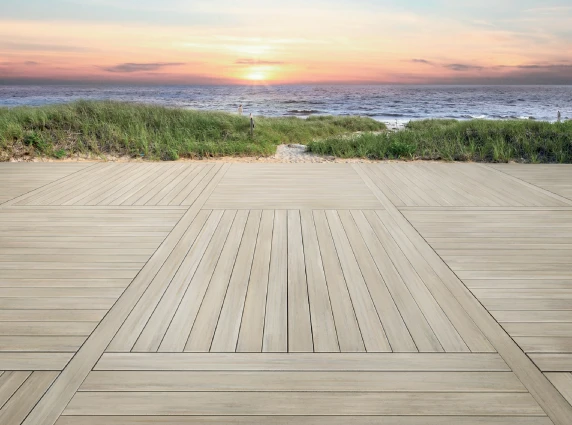
Guide: Questions To Ask When Choosing Deck Boards
Where is your deck located?
What will you do on your deck?
What furniture or other objects will live on your deck?
Answering these big questions will help you find the deck boards that best fit your deck. Check out our guide and find your ideal deck boards!
Read the Guide
Composite Decking Costs
The question of cost often comes up when discussing the best composite decking. It's important to look at the total picture when deciding which deck boards are right for your project.
Initial vs Long-Term Costs
Composite decking will cost more up front than most types of wood. But long-term, composite decking will save you time and money in yearly maintenance. Finding the right material for you depends on how you want to balance initial vs long-term costs.
Estimated Initial Costs For Different Decking Materials
Based on research from HomeAdvisor and Home Guide.
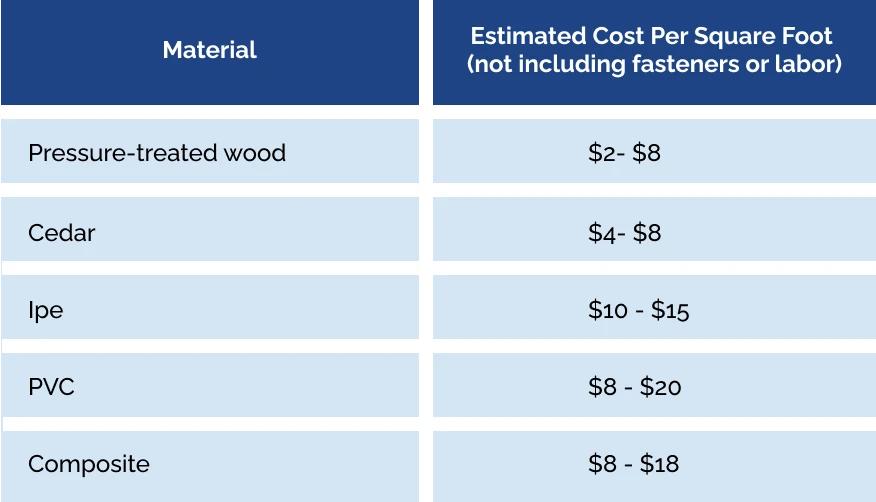
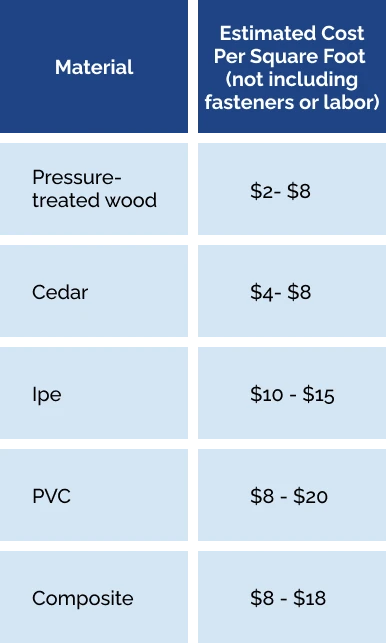
Comparing Long-Term Costs: Wood vs Composite
Here's a quick long-term estimate for a standard 16-foot by 20-foot deck using composite or pressure-treated wood deck boards.
We've used numbers right in the middle of the HomeAdvisor/Home Guide estimate ranges above:
- Estimated material costs: $5 per square foot for wood and $13 per square foot for composite
- Estimated labor costs: $12 per square foot for either material
- Estimates don't include fasteners or other features like framing or railing
- Estimated maintenance costs: staining ($3 per square foot) and sealing ($2 per square foot), including labor and materials
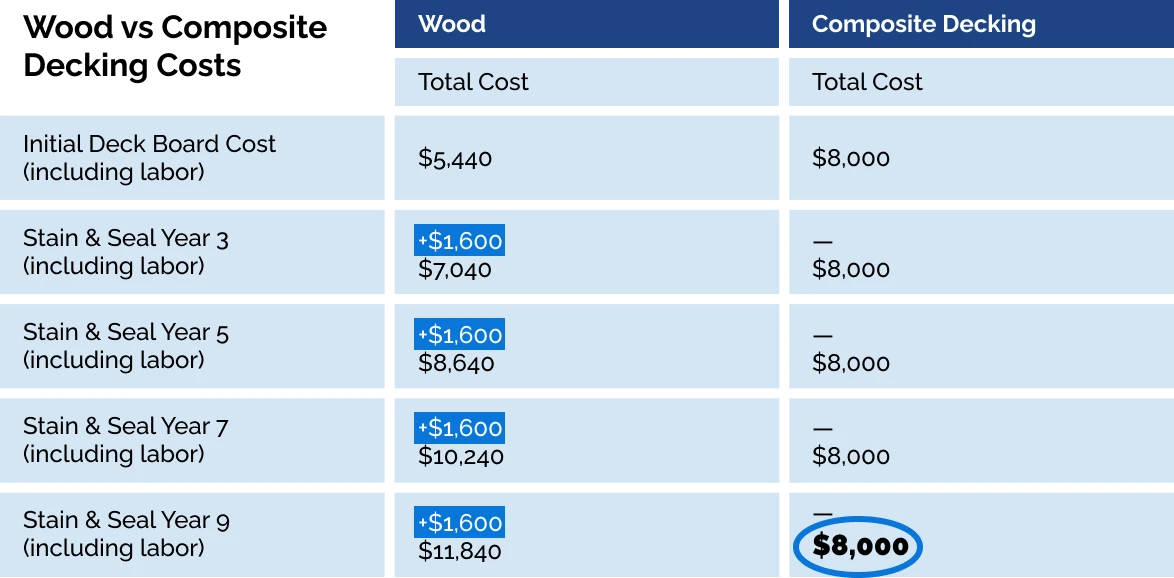
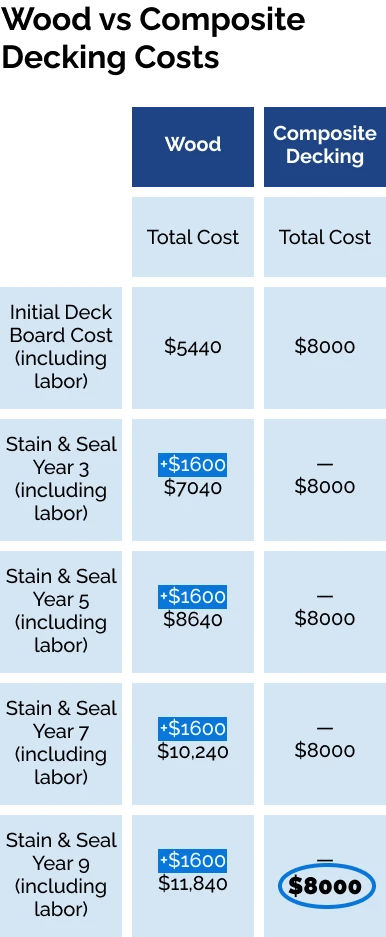
*For 16x20 deck - not including fasteners, framing, etc.

Fill Out Our Easy Project Planning Guide To Get Started
Installing Composite Decking
The best composite decking allows you to create a clean, unblemished decking surface, with hidden fastening methods that blend in far better than standard wood screws.
Here are the three most common ways to hide your deck board fasteners:
Hidden Fasteners
Choose grooved-edge composite deck boards to work with hidden fasteners that fit between the boards, securing them to your framing without puncturing the boards themselves.
Most decking brands offer their own specialized hidden fasteners, designed to work perfectly with the shape of their deck boards grooves.
Benefits:
- Smoothest, blemish-free deck surface
- Doesn't puncture deck board capping
- Easy to replace boards if needed
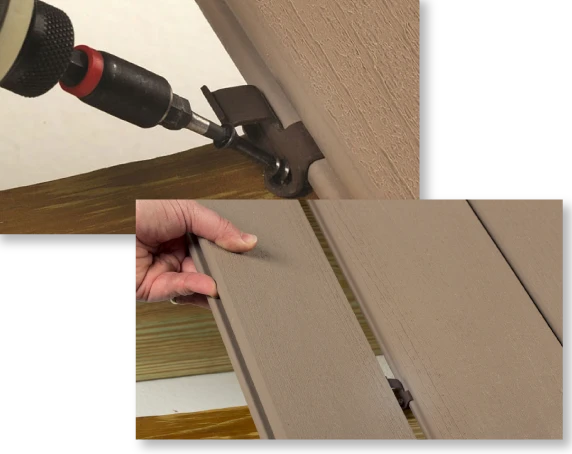
Plug Systems
Plug systems give you the superior strength of traditional face-fastening - but the screws countersink beneath the surface of your deck boards.
Perfectly color-matching plugs, made from the exact same material as your deck boards, fit in the hole above the screw, completely disappearing once installed.
Benefits:
- Strongest hold-down power
- Smooth, unblemished deck surface
- No risk of screw heads sticking up
- Protects screws from corrosion
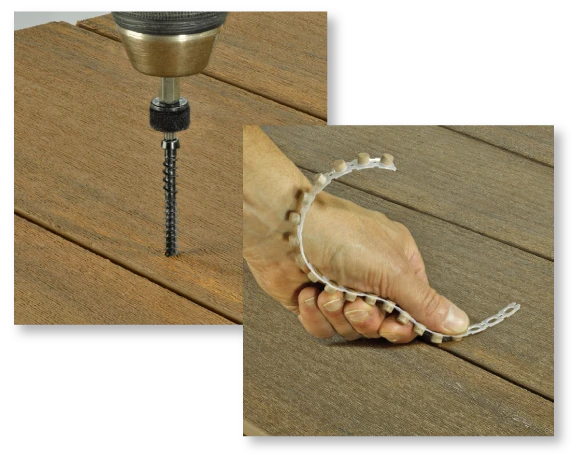
Standard Face-Fastening
Color-matching screws are designed to perfectly match the color tones of your composite deck boards, camouflaging into your deck surface once installed.
Benefits:
- Strongest holds
- Easy, fast installation
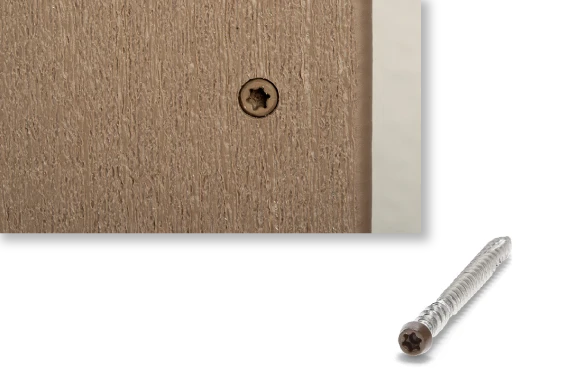

Composite Decking Maintenance & Care
Composite decking never needs to be painted, stained, or sealed, unlike wood decking, which requires re-staining and re-sealing every year or two.
That'll save you tons of money in the long run, not to mention hours of back-breaking summer deck staining. Trust us: once you've stained a deck under the hot summer sun, you'll never want to do it again.
To keep the best composite decking strong and looking great, you'll need to periodically clean your deck. You can sweep away most debris with a simple household broom and a quick spray with a garden hose.
Even a deeper spring cleaning is easy: just use warm, soapy water and a soft bristle brush on any stubborn spots of stuck-on dirt or debris.
Environmental Impact of Composite Decking
The best composite decking is an eco-friendly alternative to traditional wood, using recycled plastics and wood fibers. Trex, for example, uses more than 95% recycled materials for its deck boards.
While wood decking contributes to deforestation, composite decking is an environmentally-friendly choice that allows you to both enjoy and respect the Great Outdoors.
Composite Decking FAQs
As a leading composite decking supplier, DecksDirect has a wealth of information to share about the best composite decking. Here are some common inquiries we receive.
Where Is the Best Place To Buy Composite Decking?
DecksDirect is the best place to buy composite decking. We carry a wide array of the best composite decking, ready for fast shipping nationwide. Plus, we offer excellent customer support with a staff always ready to help with your questions and concerns.
What Is the Best Composite Decking for the Money?
The best composite decking for the money depends on your goals and the specifics of your project. Trex, TimberTech, and Fiberon all offer excellent advantages at different price points. Read our guides or call our helpful team at 1-888-824-5316 for assistance in selecting the best composite decking for your space.
Does Composite Decking Get Hot On Sunny Days?
All decking materials, including wood or composite, will heat up in direct sunlight. While composites do heat up faster than wood, decking material is not the biggest factor in creating a barefoot-friendly deck. Here are the three biggest factors controlling deck board temperature:
- Decking color
- Direct sunlight
- Ambient temperature
If your deck is in direct sunlight, we recommend choosing a lighter color for your deck boards - light grays and light browns tend to absorb less heat from the sun compared to darker shades.
You can also try to limit the amount of direct sunlight and the temperatures around your deck by installing shade structures like pergolas or umbrellas.
Ultimately, these factors will matter more in keeping your deck cool than the decking material you use.
Certain deck boards are also designed to stay cooler, too. Trex's Transcend Lineage decking line uses new capping technology to stay cooler in the sun than most composites. And TimberTech's Advanced PVC decking will heat up slower and cool down faster than typical composites.
Can I Curve Composite Deck Boards?
Yes! You can create unique deck patterns by curving or bending composite deck boards. First, you'll heat the deck boards, then bend them to the angle you need. You'll likely need to work with an experienced local contractor to take advantage of this feature. If you're interested in curving deck boards, we'd recommend giving our team a call at 1-888-824-5316 to help you draw up a complete deck plan your contractor can follow.
Reviews & Testimonials

Rich Color! The boards were perfect and an absolutely gorgeous deep brown! Couldn't be happier!- Annette T. (who used Trex Select decking for their deck)

100% quality. Highly recommend.- Rafael S. (who used Trex Transcend decking for their deck)

These boards are really nice with a natural wood finish.- Andres C. (who used Trex Transcend decking for their deck)

Trex + hidden fasteners = a breeze. These look great as I expected and install with the hidden fastener clips was incredibly easy.- Tighe C. (who used Trex Select decking for their deck)

Love the product and love the low maintenance aspect even more.- Jennifer B. (who used Trex Enhance Naturals decking for their deck)

Product was easy to work with and made our old deck new again. Family loves the newly finished deck.- Blake G. (who used Trex Enhance Naturals decking for their deck)
Photo Gallery
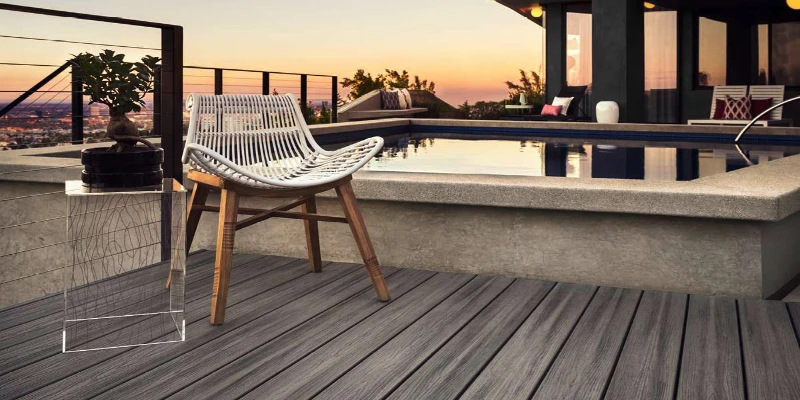 Pictured: Trex Transcend decking in Island Mist
Pictured: Trex Transcend decking in Island Mist
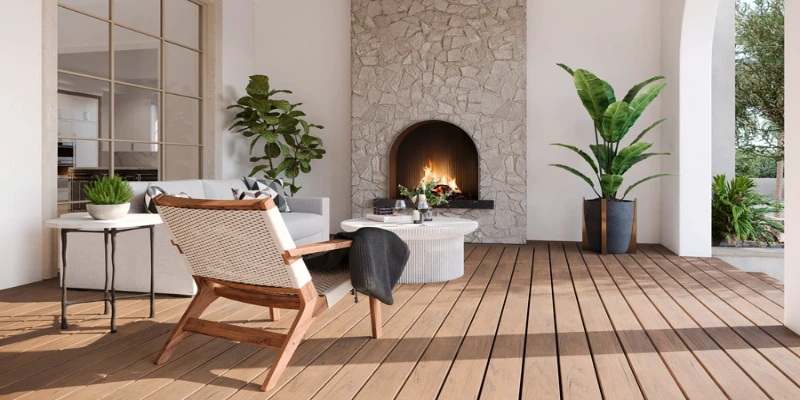 Pictured: Trex Transcend Lineage decking in Carmel
Pictured: Trex Transcend Lineage decking in Carmel
See more photos in our gallery of customer-submitted composite deck photos!

Ready to get started?
Download and fill out our free Project Planning Guide to get started with one of our deck experts.






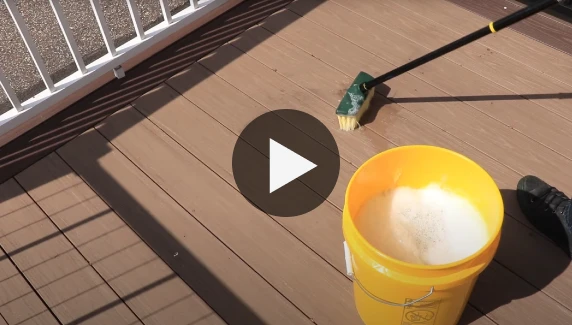
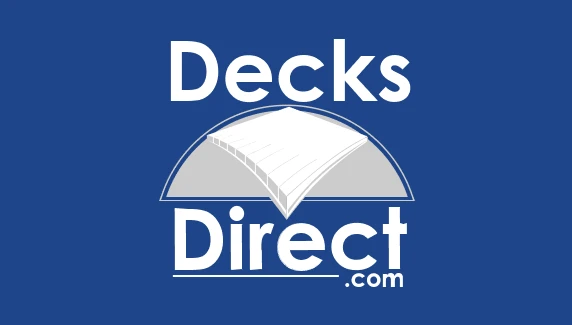


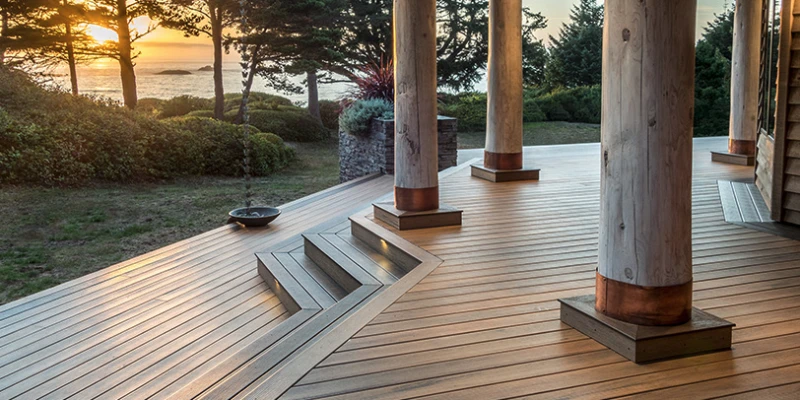 Pictured:
Pictured: 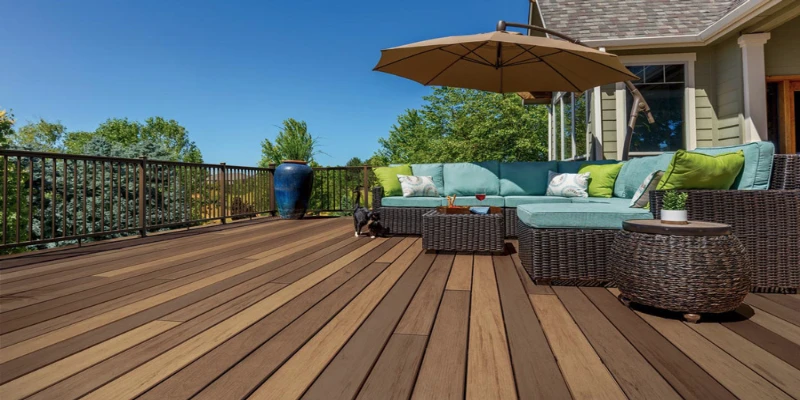 Pictured:
Pictured: 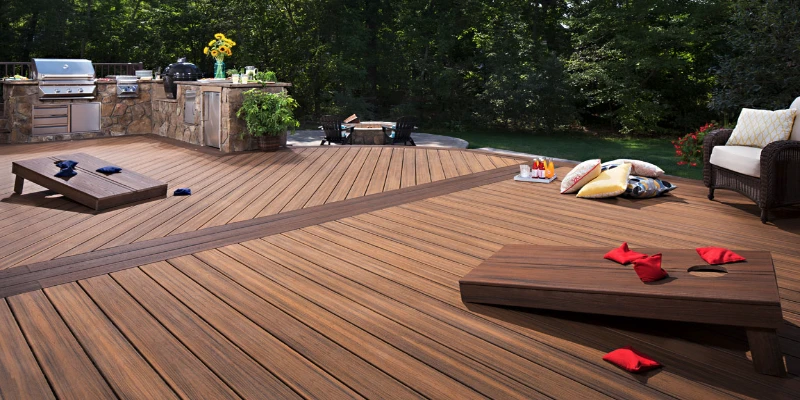 Pictured:
Pictured: 